7 Amazing Serval Facts
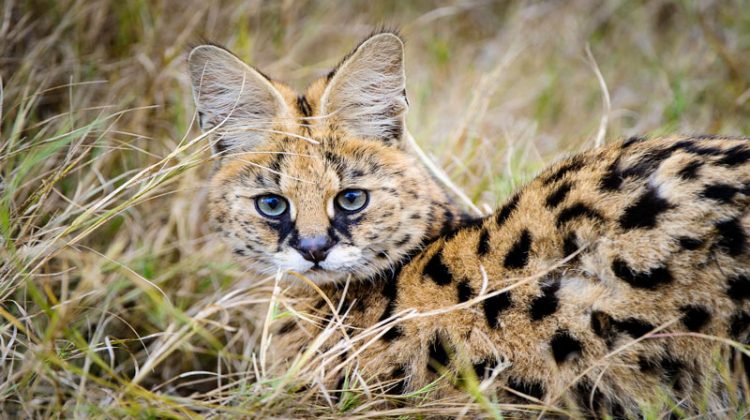
The BBC’s Planet Earth 2, presented by David Attenborough, includes a number of scenes of serval cats. The association of serval cats with human beings dates to the time of Ancient Egypt. Servals are depicted as gifts or traded objects from Nubia in Egyptian art. Over the years, servals, otherwise known as ‘savannah cats’, have gained popularity as pets. Seeing one on safari is quite rare and although they hunt on average 15-16 times a day, witnessing a serval hunt is even rarer.
1. Where can I see a serval on safari?
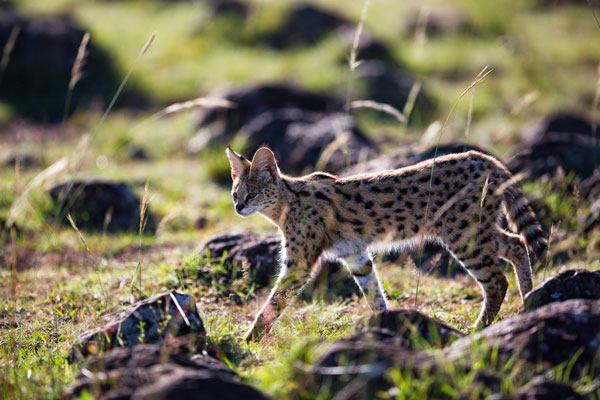
Serval cat in the Masai Mara, Kenya at Rekero Camp, © Lucinda Roberts
The serval (Leptailurus serval) is a slender spotted cat associated with moist savannah, swamp and forest fringe habitats. Servals are common where there is plenty of water – they prefer areas of bush, tall grass and dry reed beds near streams. They are also found in high-altitude moorlands and thicket. They are native to more than 35 African countries. Serval sightings on safari are rare and the best place to see them is in the Serengeti, especially in the first half hour after sunrise and just before sunset.
2. How can I identify a servals on safari?
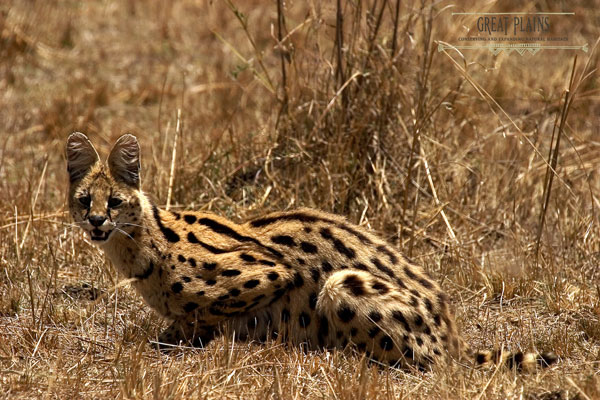
Serval in the heat of the day, Great Plains Conservation, Mara Plains
It’s slim, long-legged build resembles that of a cheetah but smaller, shoulder height 55cm /22 inch. It has a proportionally shorter tail (one-third of its body length) as opposed to two-thirds. It has black –on-gold spots which are elongated towards the head. Servals also have exceptionally large and prominent ears, which are an adaptation for detecting the movement of prey in long grass. They weigh about 30-40lbs / 13-18kg.
3. What do servals eat?
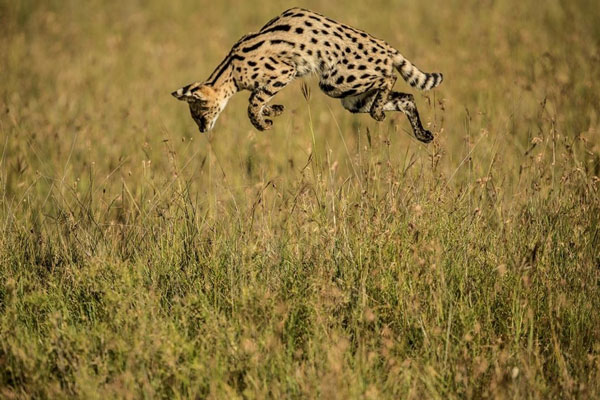
A serval cat’s distinctive leap hunting behaviour, Serengeti, Tanzania, Karibu Camp Collection
Servals eat a variety of prey mainly rodents and birds, which it pounces upon with spectacular high spring, dispatching its victim with a fatal blow from one of its fore paws. They can jump up to 3 metres/ 10 feet in the air. The also eat reptiles, frogs and insects. They have also been seen using their long forelimbs to reach into burrows or to hook fish out of water.
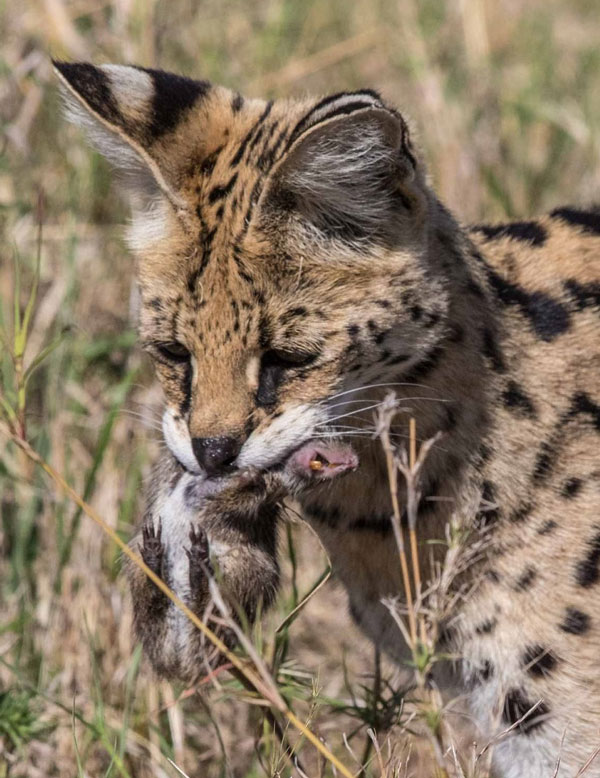
A successful rodent hunt, Kicheche Mara Camp, Masai Mara, Kenya © Paul Goldstein
4. What is the mating behaviour of servals?
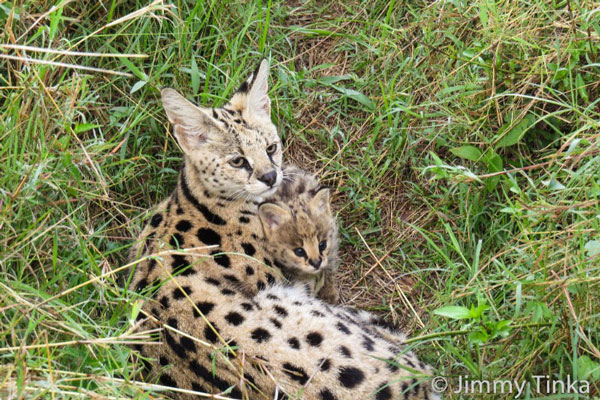
Serval kitten with mother, Kicheche Camps, Masai Mara, Kenya © Jimmy Tinka
Servals come together in pairs only for a few days when the female is in heat.
5. What are the serval kittens like?
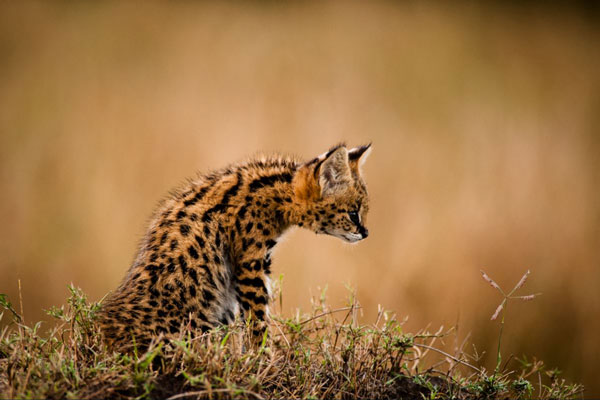
Serval kitten, Masai Mara, Kenya © Michelle Dyball
A female serval gives birth after 70 days. Serval kittens born in litters of two to four are difficult to spot as the mother hides them well and frequently changes the hiding place. The mother raises the litter alone and she must hunt frequently to feed them. When the serval kittens are young enough to hunt the mother drives the male offspring out. Young females remain somewhat longer but when they are sexually mature they too leave to establish their own territories.
6. What are a serval’s predators?
Hyenas, leopards and hunting dogs prey on serval cats.
7. What other safari animals are commonly mistaken for servals?
Cheetahs have similar markings but are much bigger and have smaller ears.
Civets are from the mongoose family, darker markings and smaller ears
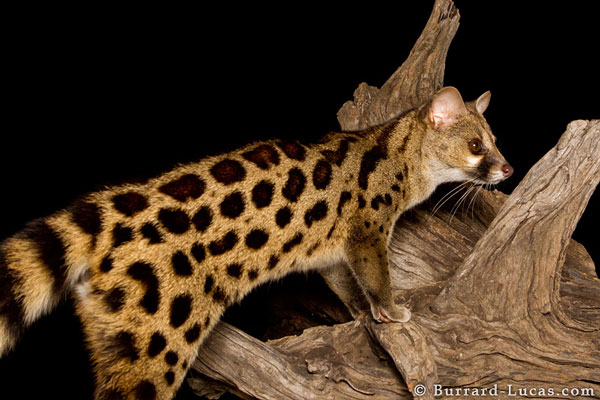
Spotted Genet at night © Will Burrand-Lucas
Genets have much smaller ears.
Caracals have fine ear tufts and uniform colouring.
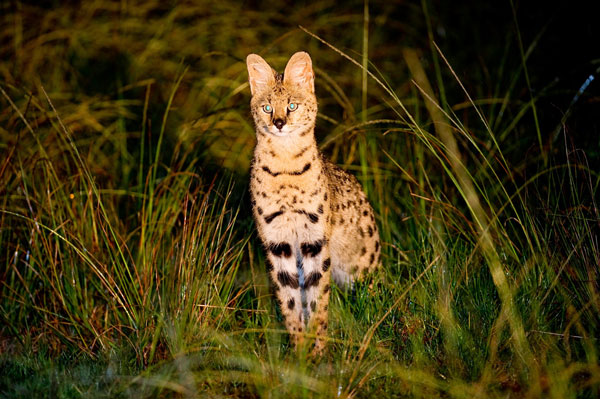
Serval in the Nyika Plateau, Malawi, Chelinda Lodge Wilderness Safaris
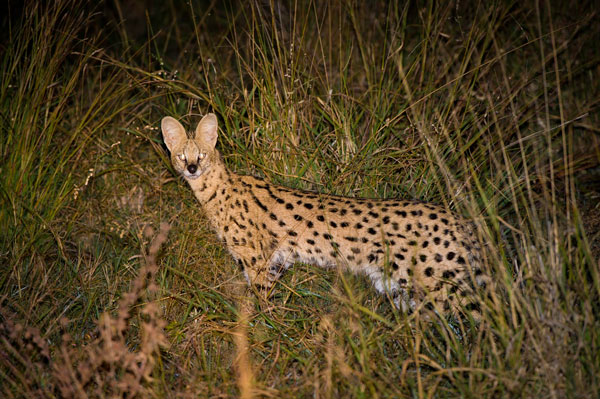
Serval in Botswana, Linyanti Bush Camp, African Bush Camps
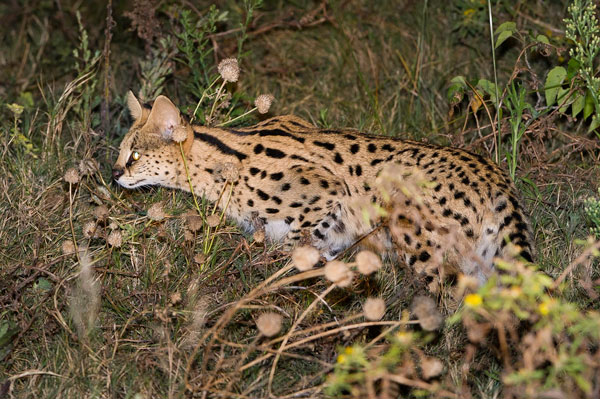
Serval in Linyanti, Botswana, DumaTau Camp, Wilderness Safaris
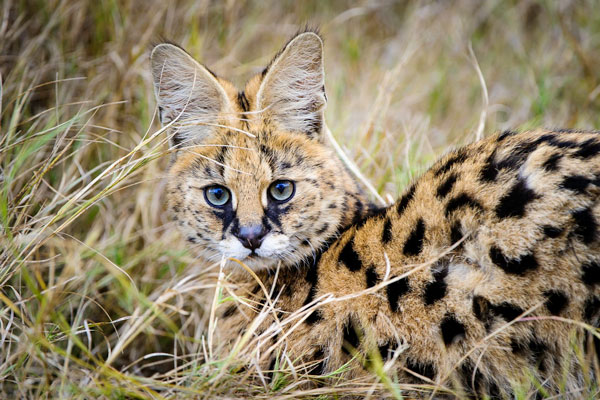
Serval’s face, Moremi Game Reserve, Botswana, Mombo Camp, Wilderness Safaris © Dana Allen
Any questions on a serval safari?
If you’ve got this far and not found an answer to a question you have that we should have included, please ask in the comments section below, or pop us an email. We’ll be sure to reply and may amend the article to include our answer.
What next?
We would be delighted to help you plan a holiday, or answer any questions if you’re at an earlier stage. Our team of experts have travelled widely throughout Africa. They can offer expert advice on every type of safari from family and beach holidays to riding and primate safaris. If you would like to talk to someone who has been there and done it, please just send us an email or give us a call.
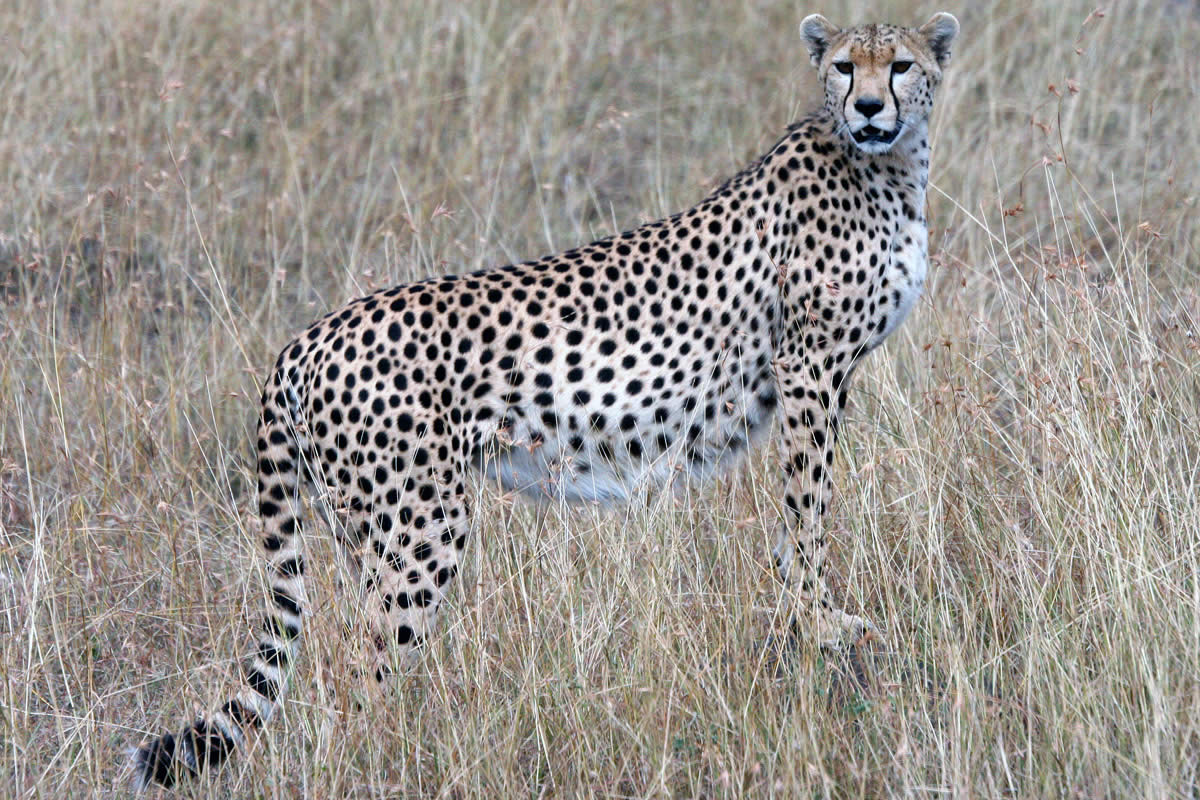
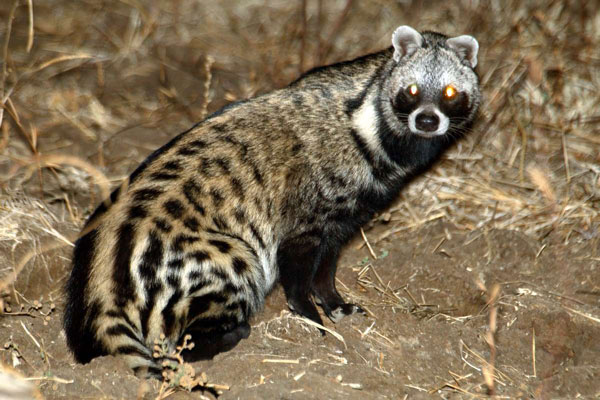
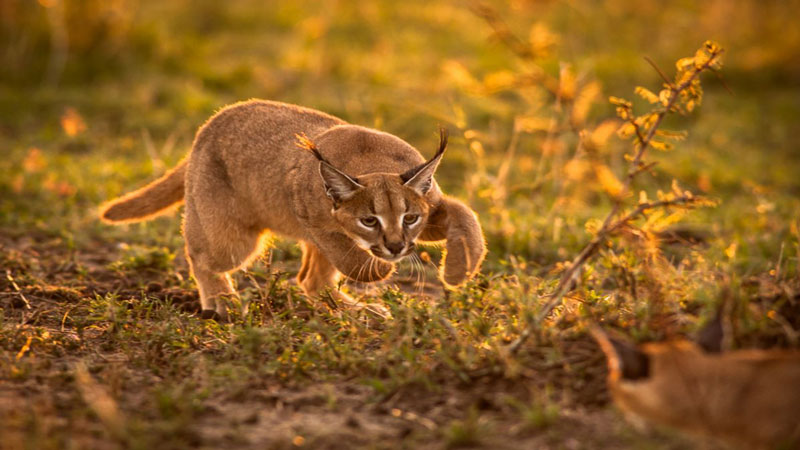

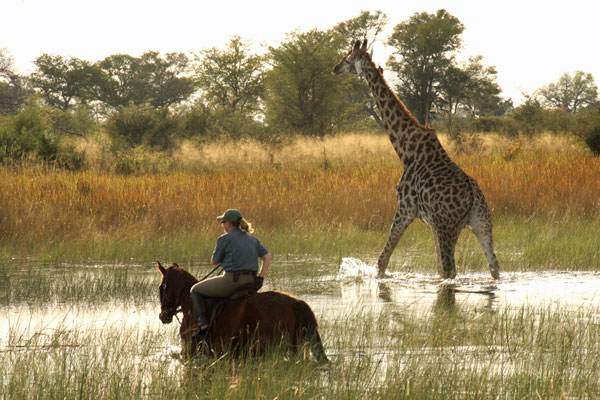
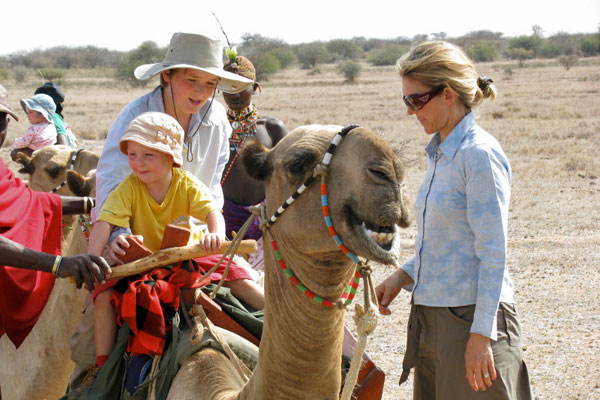 Camel safari, Kenya, Laikipia,
Camel safari, Kenya, Laikipia,  Luxury safari accommodation Waterberg, South Africa,
Luxury safari accommodation Waterberg, South Africa, 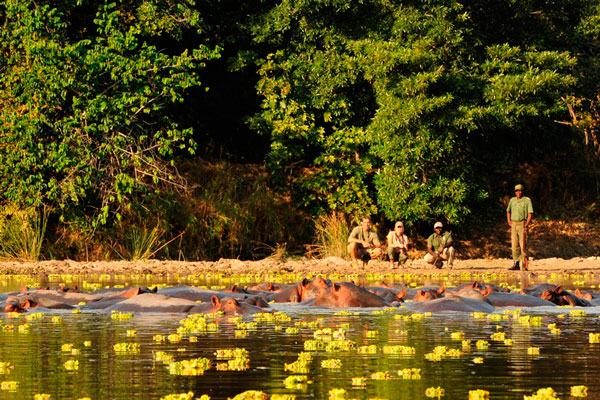 Hippos on a walking safari, South Luangwa, Zambia,
Hippos on a walking safari, South Luangwa, Zambia,
How many bones do servals have in their ears?
Dear Faith – interesting question on their ears – I know they have 29 muscles in their ears to pinpoint prey – Owlcation.com
Interesting……..could have added a few more captive characteristics such as use as ambassadors and individual private characteristics……… companionship, bonding, handling, etc.
What is the closest safari to Gambia, to meet the servals.
Our speciality is East, Central and Southern Africa rather than West Africa, so I can’t honestly help with Gambia and the surrounding countries. There are good regional intra-Africa flights if you were keen to investigate the destinations we recommend from Ethiopia through to South Africa
How do you think the serval will improve and develop in the future, will it look any different than it does today ?
Thanks for the question, although it’s probably better answered by a mammologist than a tour operator I’m afraid.